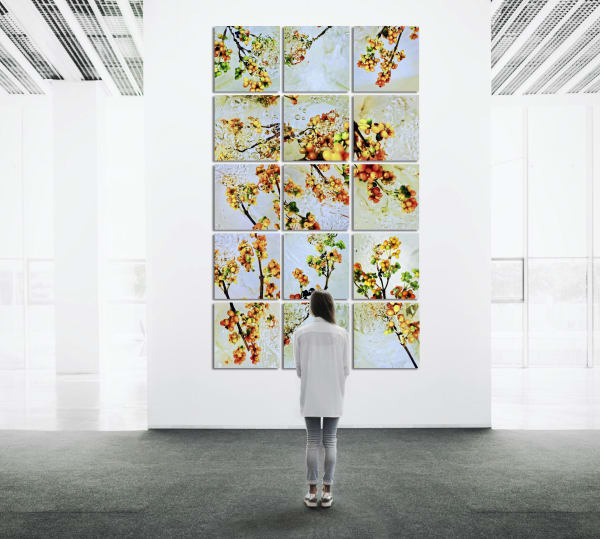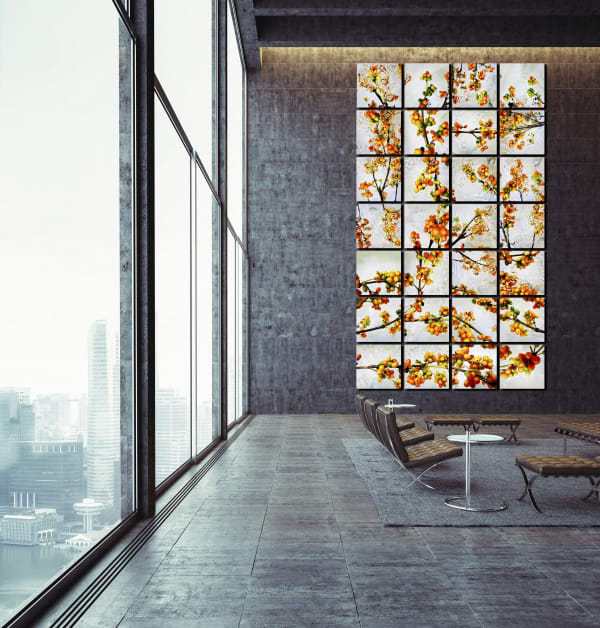-
-
Artist Statement
-
In 2020, when the Karamū was fruiting, bushfires ravaged Australia. Yellow haze drifted across the ocean to Aotearoa New Zealand. On the hills of Parau, under the hazy morning sky, a new botanical artwork saw the light.
An artwork that invites us to wake up to the sunrise when the light is still soft; to sip a cup of tea, still dreamy from the night. An artwork featuring Karamū (Coprosma robusta), a New Zealand shrub. Karamū and coffee are related, both are in the large family of Rubiaceae. To the delight of native birds, its juicy, edible fruits appear in abundance during the height of summer.
Symbolizing a morning sky glowing with inner warmth. Bridging the darkness of the night and the vitality of the day. Bursting in crispy waters between the early clouds and the rising sun. Wishing to heal the damage of the fires by purifying the reflections of the haze. Manifesting baptism, a burst of life, and the promise of new beginnings.
Auckland, July 2020
-
Botany & History
-
NOTES FROM THE CURATOR
By Ana Sevilla Perez, Curator and Art Historian, Mamakan Studio
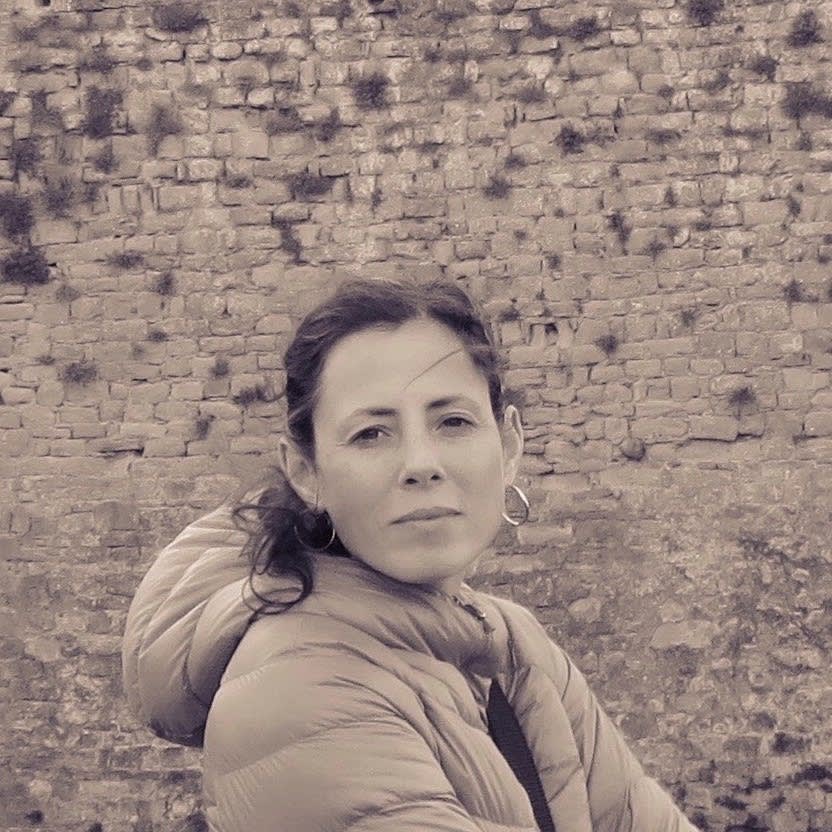
Endemic to New Zealand, karamū is a plant that grows all over the country. Its sturdiness allows it to endure difficult conditions, like low temperatures and poor soil. It can grow up to 6 meters and has glossy, dark green leaves. Male and female flowers of the karamū look different. The fruits are small, round, orange, red or even blue and very abundant.
Karamū was used by the Māori people ever since their arrival to Aotearoa. Concoctions of the leaves were good for cuts and sores, the sap was used to treat scabies, and the fruit could be eaten or used as a dye. Rheumatism, contusions, broken bones and even the loss of sight were treated with different parts of karamū. The leaves were also good for wrapping fish, and then placing it in the hāngī, the earth oven, to dry. Karamū is a close relative to the coffee plant. The early settlers noticed this and would use the seeds, roasted and grounded, to make a coffee-like drink.
Māori medicine was tied to the spiritual world, similarly to many other civilizations before the separation of science and spirit. The tohunga was a priest or expert on different issues, like healing the ill. The healing process was tied to the spiritual world by certain traditions and rituals that the tohunga performed to help the patient. These traditions very often included the use of one or several plants that held the power necessary for every particular situation. The history, the myth, the spirits and the science of nature, all blended in a perfect performance that sought to help the sick man, woman or child and restore the lost equilibrium.
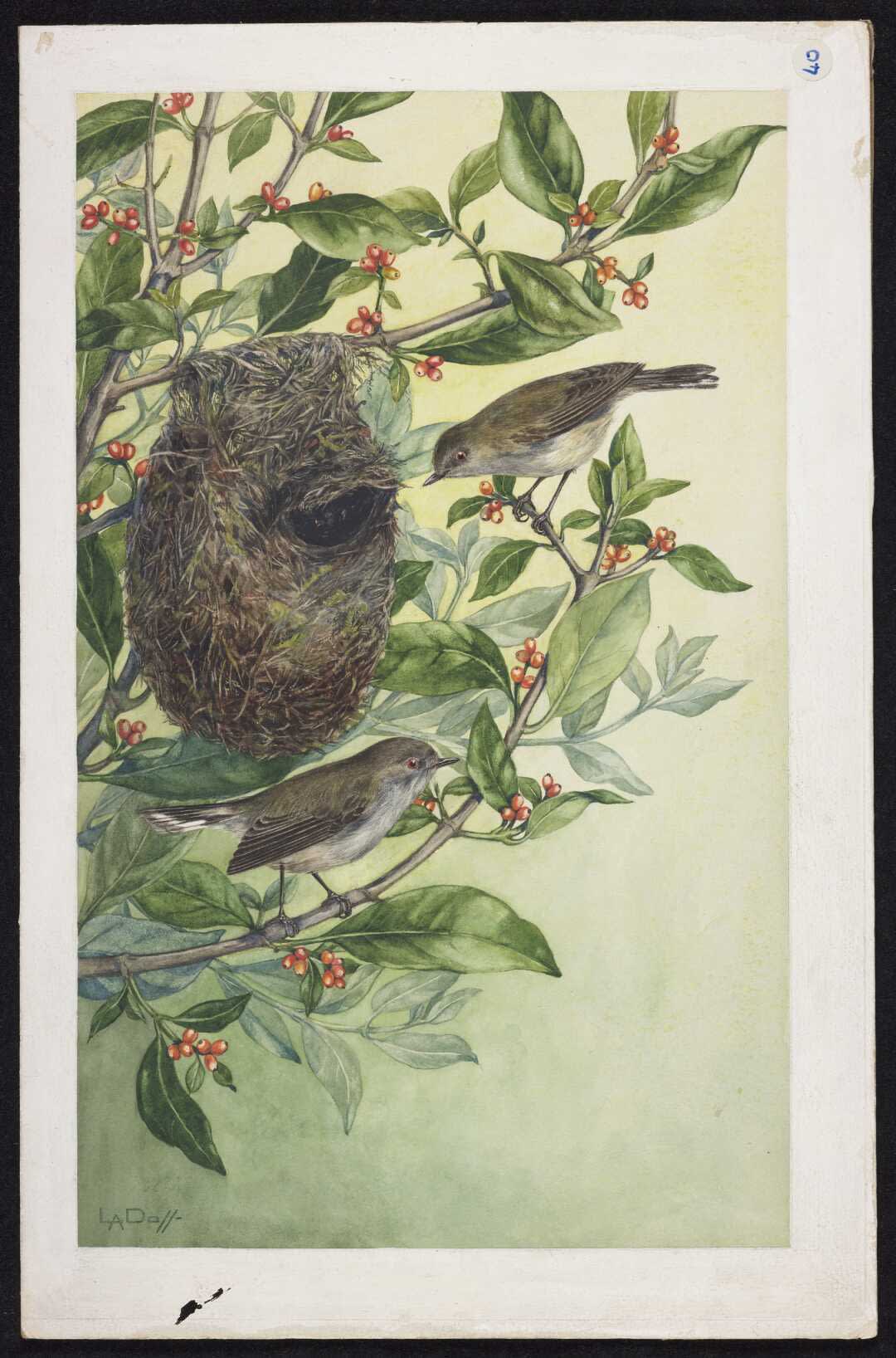
Ca 1933. Watercolour illustration by Lily Attey Daff. A pair of grey warblers, perched on karamū, with red berries, from which is suspended a nest with small opening in its side.
One of the frequently used plants was the karamū. The tohunga brought the ill person near a river or body of water and touched him with a karamū leaf. The demon or illness was now transferred to this leaf, which was then placed in the water to float away in the current. This current took the demon back to where it came from, “the great whirlpool, Te Waha O Te Parata — the mouth of the Parata — situated in mid-ocean it entered the portals of the underworld and there rejoined the spiritual powers which had sent it forth to punish the transgression of their tapu (the holy)” (P. Buck, Medicine amongst the Māoris in ancient and modern times, 1910).
Karamū was considered a very powerful plant. At the naming ceremony, the newborn male babies wore crowns made with the berries to ensure they would be strong, fast and great warriors. For the girls, they asked for them to be strong leaders in the marae (community meeting space). The baptism ceremonies often included sprinkling water on the baby with a branch of karamū. In other ceremonies, the priest would wear aprons made with the branches of karamū and/or kawakawa.
This gives us a clear idea of how important the karamū was in key moments of life. It's not a big tree, it usually doesn´t have a wide, tall trunk. Its branches and leaves don´t grow to spectacular heights or create a huge canopy. And yet, karamū is sturdy, resistant, adaptable, capable of finding strength in adverse conditions and of cleaning and clearing the sick souls.
In New Zealand, nowadays delicate essences are made out of native plants. Each of them has specific properties that emanate from the particular chemical composition of the plant, but also from it's spirit, from all that is invisible and yet perceived by our inner senses. People who lived centuries ago did not have the noise and distraction that overstimulates us today. They were much more in contact with nature, and they spontaneously appreciated nature's spirit, the magical or inexplicable spark of life that shines from everything alive.
The essences made today connect us with the spirit of each plant, it's vibration, the personality and gifts it brings us. Karamū is thus related with vitality, with the capacity to emerge with strength from overwhelming situations. It brings focus and connects us to our creative center. It is tough and light, expansive and grounding. It is, like kawakawa, one of those very humble yet immensely powerful and generous plants. They silently teach us to give, to keep trying when everything seems to go wrong, to believe in the power of honesty, generosity and resilience.
Image source: Daff, Lily Attey, 1885-1945 :[Grey warbler. ca 1933]. Ref: A-271-013. Alexander Turnbull Library, Wellington, New Zealand. /records/22317582
-
-
Senses, Art & Emotions
-
A peak into our Panel
The Panel for Emotions, Art and Senses (PEAS) gets together to experience and discuss the emotions and senses of an artwork.
With the Panel for Emotions, Art and Senses, we’re bringing together a wonderful, diverse group of people. They help to create engaging stories around the studio’s featured botanicals. The purpose of the panel is to discover the beauty of botanicals by sharing experiences around the artworks .
The panellists represent a wide spectre of creative expression including Visual Art and History, Design, Theatre, Photography, Gastronomy and Spiritual Well-being. It's a diverse group of international and well-traveled women from France, Italy, Denmark, New Zealand, Singapore, The Netherlands, California, Malaysia and the Maldives.
A warm thank you to the moderators and panellists at this session: Marrije Wesseling (Studio Manager), Ana Sevilla Perez (Curator), Avalyn Lim, Antonella Scarabelli (Lead), Sanne van Steensel, Rita Herban, Lucy Horta and Helle Cecilia Max Hansen.
See a snapshop from our last panel meeting here:
-
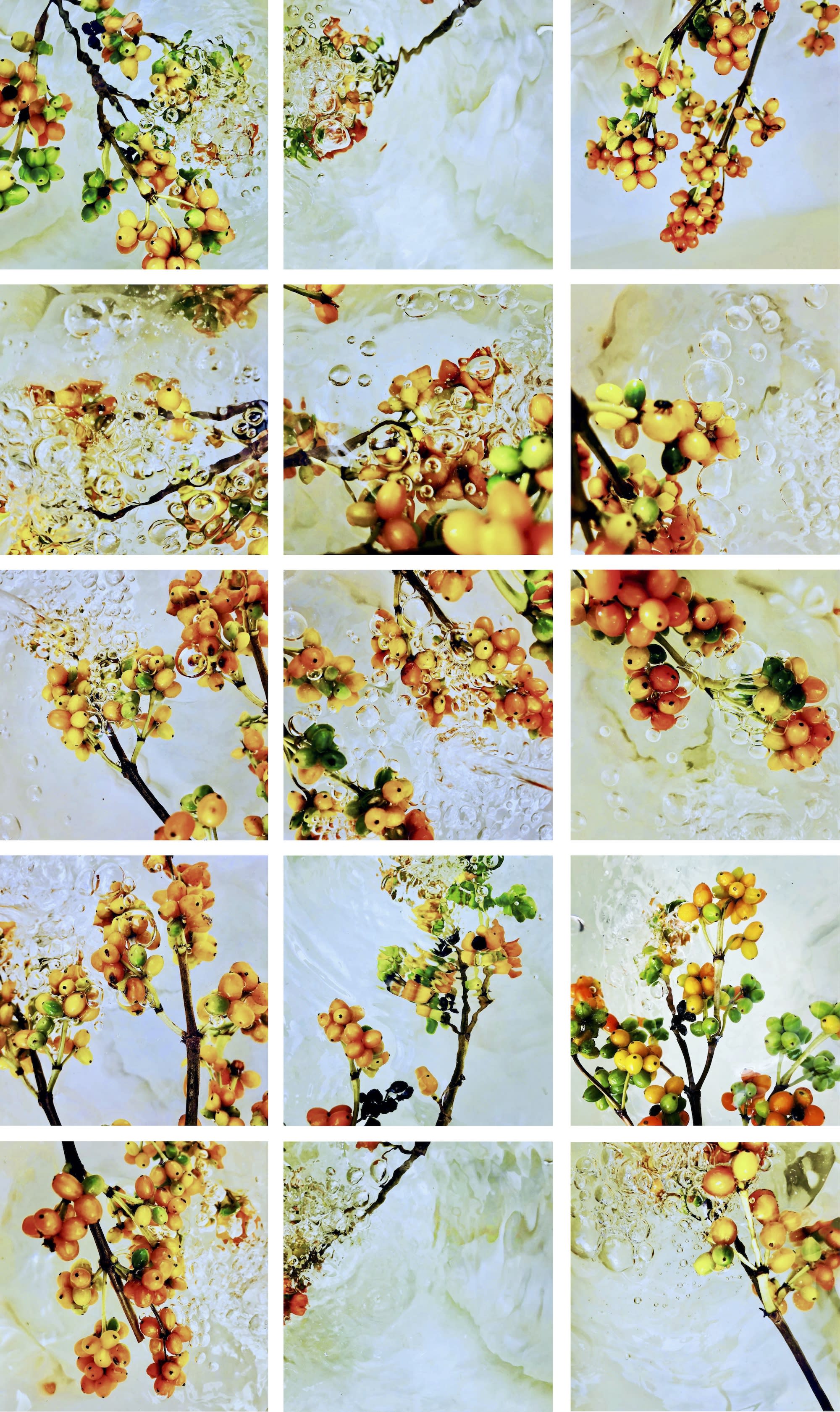
-
Emotions and Senses
"Baptism, manifestation and new beginnings"
FIRST IMPRESSION
Joyful, a sweet sounding melody, a clean slate, new life, wellness, baptism, manifestation and new beginnings, arousing of spiritual emotion/connection, a presence of divinity.
EMOTION
Springtime, awakening, burst of life, a childhood walk in the forest, playful, starting anew, inner warmth, happiness, watching the changing colours of the sea, budding love, vitality.
Peaceful, joyous, airy, inspiring, reflective and also slightly mysterious feel - the feeling that comes when you connect with nature and everything falls in to place. It grounds and balances me. It puts me in touch with my intuition and helps me find the answer.
SOUND, MUSIC
Raindrops, flutes, high pitched, twittering bird tunes through an open window, crystal chimes tingling.
SMELL
Refreshing, candy, sweet.
TOUCH
Soft, lace, embroidery, grainy, silky, shiny, viscous, like pouring maple syrup on your pancakes, warmth.
COLOUR PALETTE
From Left: Beau Blue, Beau Blue (Darker), Alloy Orange, Ash Gray, Sage, Minion Yellow, Maize Crayola, Medium Champagne, Riffle Green, Xiketic.
-

-
Other artworks featuring Karamū (Coprosma robusta)
Morning Sky Viewing Room
Past viewing_room
